Suunto Spartan Sport Review – Wrist HR

It’s nearly a year since Suunto sprang the SPARTAN on an unsuspecting world (Summer 2016), here in this Suunto Spartan Sport review, we take a detailed look at the wrist heart rate (whr) version. We all were waiting for the AMBIT 4 and we got the top-end SPARTAN ULTRA. Then we quickly got the SPARTAN SPORT. Long Pause. And now we have a the SPARTAN SPORT WHR. And there will be more …
The models are very similar. Most people would buy the cheaper SPORT model rather than the ULTRA. If you want it with optical HR then you go for the WHR version. Simple. Otherwise the 2 sport versions are the same. The ULTRA is a bit deeper and that gives a bigger battery and a barometric altitude sensor.
Over time Suunto are also pretty good at offering cosmetic variations of the above models. There are already a few of these, such as the SPARTAN ULTRA COPPER, and there will be more in the future. Probably lots more so I won’t cover them here.
The 2016 release of the SPARTAN was shaky. It was and is a great bit of hardware but the software/firmware on the watch and on the app/online weren’t quite there in 2016. Fast forward to NOW and you can ignore all of that history and the product is worth considering in my opinion (FWIW: I like it)
The SPARTANs could be seen as sitting between the Fenix 3 and the new Fenix 5. You’re probably considering one of those two and have read glowing reviews. I’m not so sure about how glowing those reviews should be and I would also urge you to read my review of Garmin’s Fenix 5X – it really is NOT as rosy as you are led to believe elsewhere.

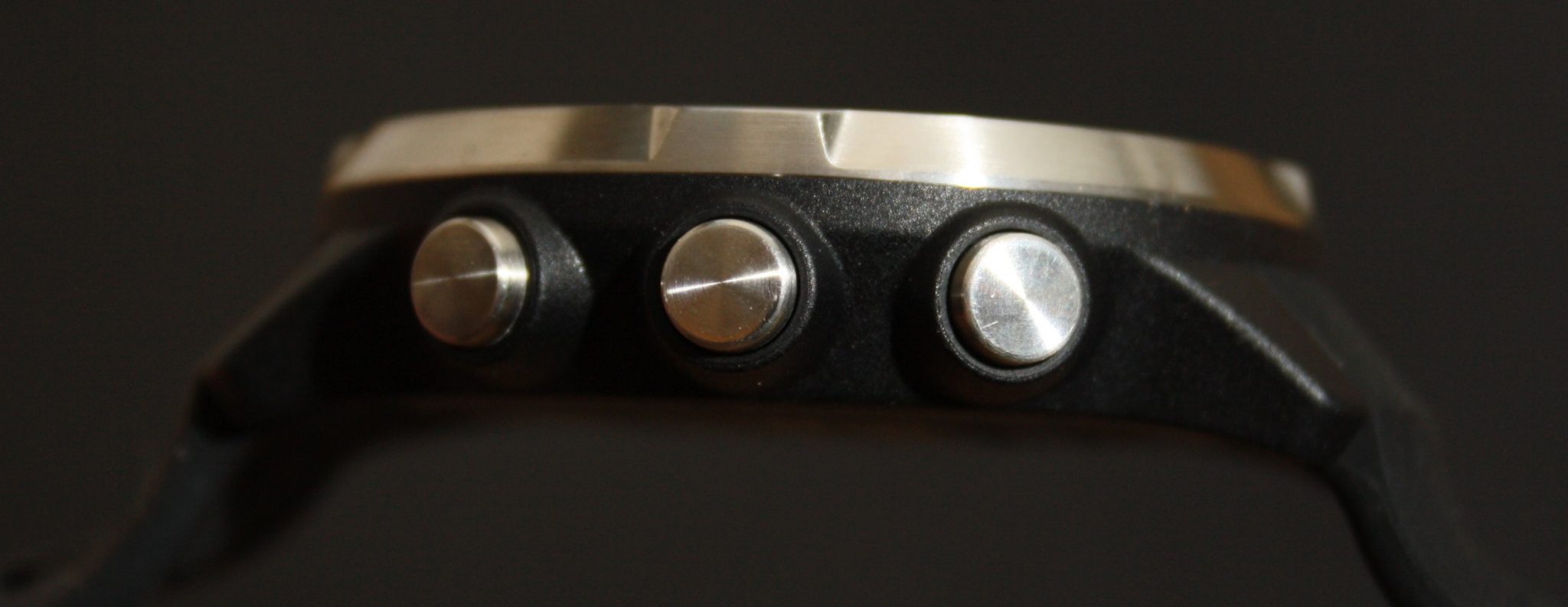
Unboxing & Contents
You get the watch and a charging strap. That’s pretty much it.

It’s a USB charging strap and the bit that fastens to the watch is with a STRONG magnet and is shown above. The strap is what you use to charge the SPARTAN and update the firmware. You can upload your workouts over the cable to or through/to the MOVESCOUNT app on iOS and Android.
Visual Comparisons
The SPARTAN lineup shown from the rear only has the obvious difference of the Valencell optical sensor array. Other than that there are only tiny differences such as around the buttons.

Here we compare the ULTRA to Garmin’s Fenix 3

And here the Fenix 5X the SPARTAN SPORT WHR and a Garmin Forerunner 235.

Clearly it’s in the ‘big watch’ category rather than the ‘medium’ (235) category. It’s your call how that will look on YOUR wrists.
Turning to the depth of the watches then the ULTRA and the 5X, below, are on the THICK side compared to a lightweight Garmin Forerunner 235

Note: the SPORT WHR is several mm thinner than the ULTRA and the additional 1mm depth from the Valencell sensor becomes pressed into the skin so adds no height to the wearer.
Here’s a parade of some of the usual suspects.

- Ultra is 17mm thick, Sport is 13.8mm thick, (Fenix 3 is 16mm, 5X is 17.5mm thick, 735XT is 11.7mm)
- Ultra/Sport are 50mm in dia (watch body not screen), 735XT is 45mm in dia (screen 31.1mm), F3 is 51.5mm in dia (screen 30.4)
- Ultra/Sport have superior screen resolution 320x300px, F3 is 218x218px, F5 is 240x240px, A3 is 128x128px
Now you know.
IN-USE OVERVIEW

There’s a touchscreen as well as buttons. The touchscreen is mostly redundant and you can just use the buttons. That’s what I do with the occasional swipe when it suits me. The touchscreen is up there with other ‘good’ watch touchscreens. but I don’t like touchscreens as ALL of them have their ‘moments of annoyance’ in some situation or other. In my experience, Garmin seem particularly bad with touchscreens, as a generalisation.
Earlier firmware versions of the SPARTAN SPORT had a slight lag when scrolling between menus. This HAS been improved. However I think there is a design issue here with the screen ‘flow’ from one screen to the next. It does feel a little laggy. HOWEVER I have put the Fenix 5X and the SPARTAN side by side and the SPARTAN is QUICKER at drawing most screens after a button press. It just doesn’t FEEL like it is.
(Here) is a detailed walkthrough of an earlier version of the menus – it’s still very similar situation to now and worth a quick look.
As a summary these are the main areas on the watch menus:
- Selectable watch face;
- Activity – steps and calories;
- Summary of Training History – by sport and by km/hours;
- Navigation – POIs, routes, compass;
- Logbook – Details of your completed workouts. Nice;
- Stopwatch – It’s a watch…that you can stop;
- Trending/Current heart rate;
- Recovery;
- Settings; and
- EXERCISE/SPORTS – Here you choose from one of the MANY predefined sports profiles AND customised sports profiles that you create on MOVESCOUNT.
The Android app is relatively basic but does a good enough job for me.
You can do all of this with the APP:
- Review workouts graphically and with numbers;
- Sync your workouts;
- Change some watch settings; and
- Create a new workout just with a Suunto SMART Belt – No watch required! (like Polar Beat – NOT like Garmin Connect Mobile).
Here is a flavour of the APP with some screen grabs:
Pairing to the smartphone is a bit on the flaky side but eventually worked on my phone. I don’t really do all that app/sms notification stuff…but you CAN. Once that is set up and working you don’t need the MOVESCOUNT app running to get notifications. I’ve heard reports of some users having issues there – other than getting it to pair I had no notable issues.
Note: It is Bluetooth SMART..so you pair within the MOVESCOUNT app. You shouldn’t have to enable anything on the watch as visibility should be ON by default.
Then there is the online MOVESCOUNT platform. That covers what the app covers and quite a lot more besides. There are 3 kinds of sports data platforms: rubbish ones; general expansive platforms like Garmin Connect and Suunto MOVESCOUNT; and more analytic ones like Training Peaks.
Most people are going to be more interested in the ‘expansive platforms’ ie ones which take your data and expand on that in some interesting ways. They will probably help your training a bit and probably help your sporting enjoyment a bit without going into the gory sporting data details that someone like me might be more interested in.
MOVESCOUNT is a little slow at times and that is probably due to its highly graphical/mappy nature. However it is probably one of the better platforms and there are many interesting and useful areas to explore. Overall it’s probably NOT as good as Garmin Connect BUT MOVESCOUNT does have some more unusual features (EPOC, sport heatmaps, running power, age group comparisons, etc).
Here are some interesting screen grabs to give you a flavour of the MOVESCOUNT platform online, some are worth a look if you are not familiar with MOVESCOUNT. Of particular interest might be: Heat Maps to find new routes; training plans; unusual lap and data comparisons; and community comparisons eg answering: how does someone who did a 3 hour marathon train?
You configure the sports modes on MOVESCOUNT. Strangely, you cannot edit an existing sport mode but you can create and edit a new sport mode. You can have lots of screens with up to 7 metrics on one screen “yep..SEVEN!” and there is proper native support for displaying RUNNING power metrics with STRYD (unlike Polar and Garmin – May 2017)
Finally you can create new sports modes with customised screen/metrics or you can (de-)select pre-existing sports modes. There are several layers of settings: watch level (eg tones OFF); user profile level; sport level (eg wheel size); Navigation, POIs; and choosing specific metrics for each screen. Similar to most reasonably advanced sports data platforms.

SENSORS
Bluetooth Low Energy (aka Bluetooth SMART) sensors are supported. ANT+ sensors are NOT supported. It is possible to use a 4iiii Viiiiva to convert ANT+ to BLE.
You can only store one pairing of each sensor type.
There are 4 types of sensor: chest strap/HRM; footpod; power pod; and bike pod.
Currently (May 2017) there is a limitation with some single physical sensors that transmit 2 types of sensor signal. The limitation is that only one of those signals can be recognised. For example STRYD cannot work as a power pod and as a foot pod ie you can’t get pace AND power from STRYD, just one or the other.
A nuance that the SPARTAN has is that it will only look for a particular sensor type in a particular sport if you tell it to. For example if you have a bike power meter the SPARTAN won’t look for that PM when you choose a running sport profile, which is correct. Although you could, if you wanted, tell the SPARTAN to look for the bike power meter whilst running. This behaviour is unlike some competitor products where it seems that all previously paired sensors might be searched for. Suunto’s approach is good in one respect and then annoying in another respect ie when you have forgotten to add a particular sensor to a new sport profile and are just about to start that sport with no computer nearby. Grrrr. (Use your smartphone web browser).
Sport Usage:
I’m only going to cover the triathlon sports of swimming, cycling and running. Even then the experience of actually using the device during a sport is pretty similar regardless of the sport.
Generally the SPARTAN SPORT WHR fits snugly for sporting use and I find it comfortable and reasonably lightweight at 74g.
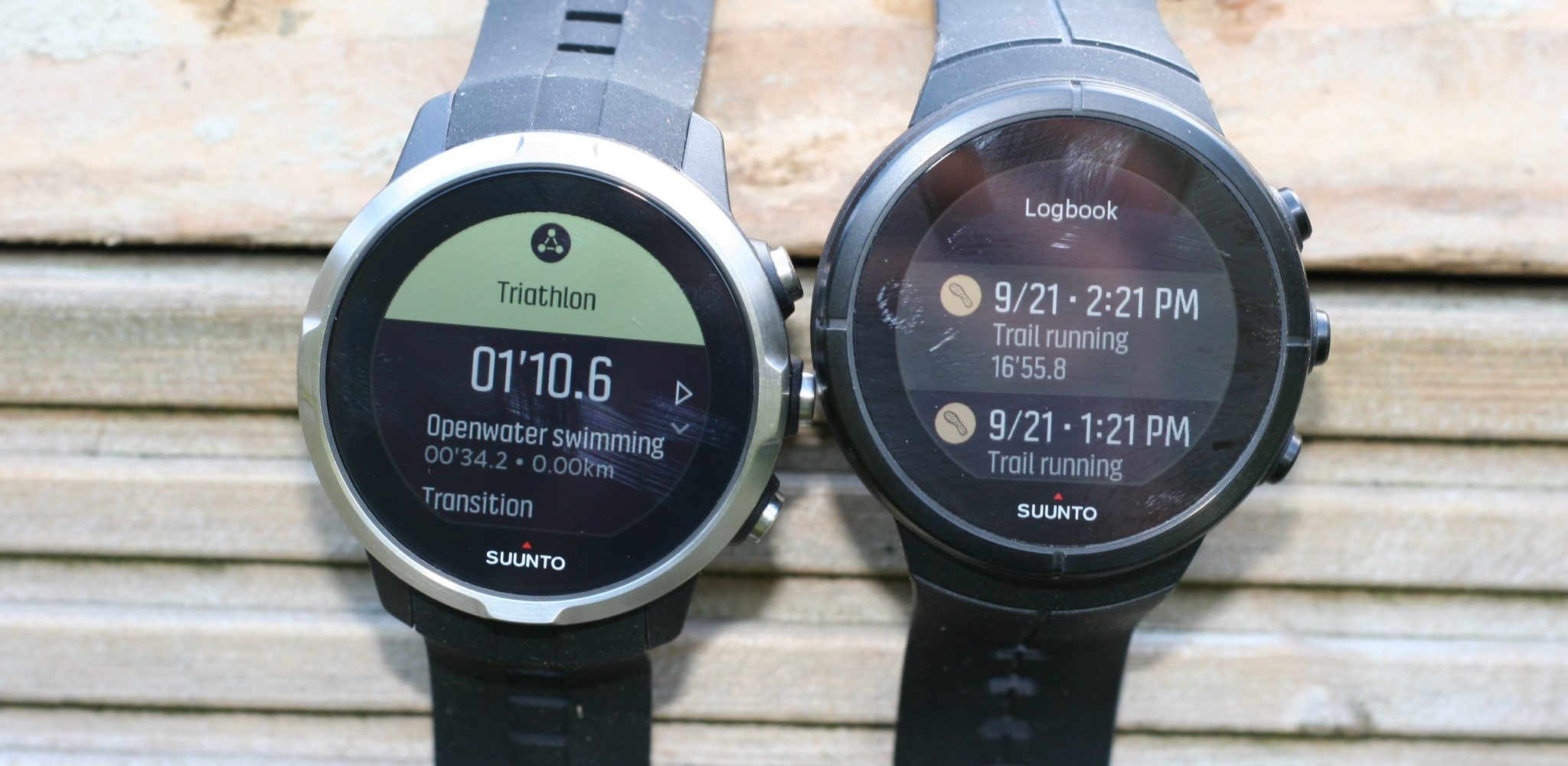
You’ve already pre-selected and pre-configured your sports profiles on MOVESCOUNT so you are good to go.
There is a slight lag as the SPARTAN initiates the sports profile and then it goes off to look for any sensors you’ve told it to look for and it also needs to get a GPS fix and a HR fix, as appropriate. You SHOULD wait for those fixes and they take only a few seconds. Then you are off.
There ARE some sport profile options that you can configure on the watch and these include: power pod calibration; target setting; navigation (breadcrumb, POI or course); autopause; GPS accuracy level; GLONASS off/on; custom intervals; pool length (swimming); and a few other minor things like power saving. I recommend BEST GPS and no GLONASS.
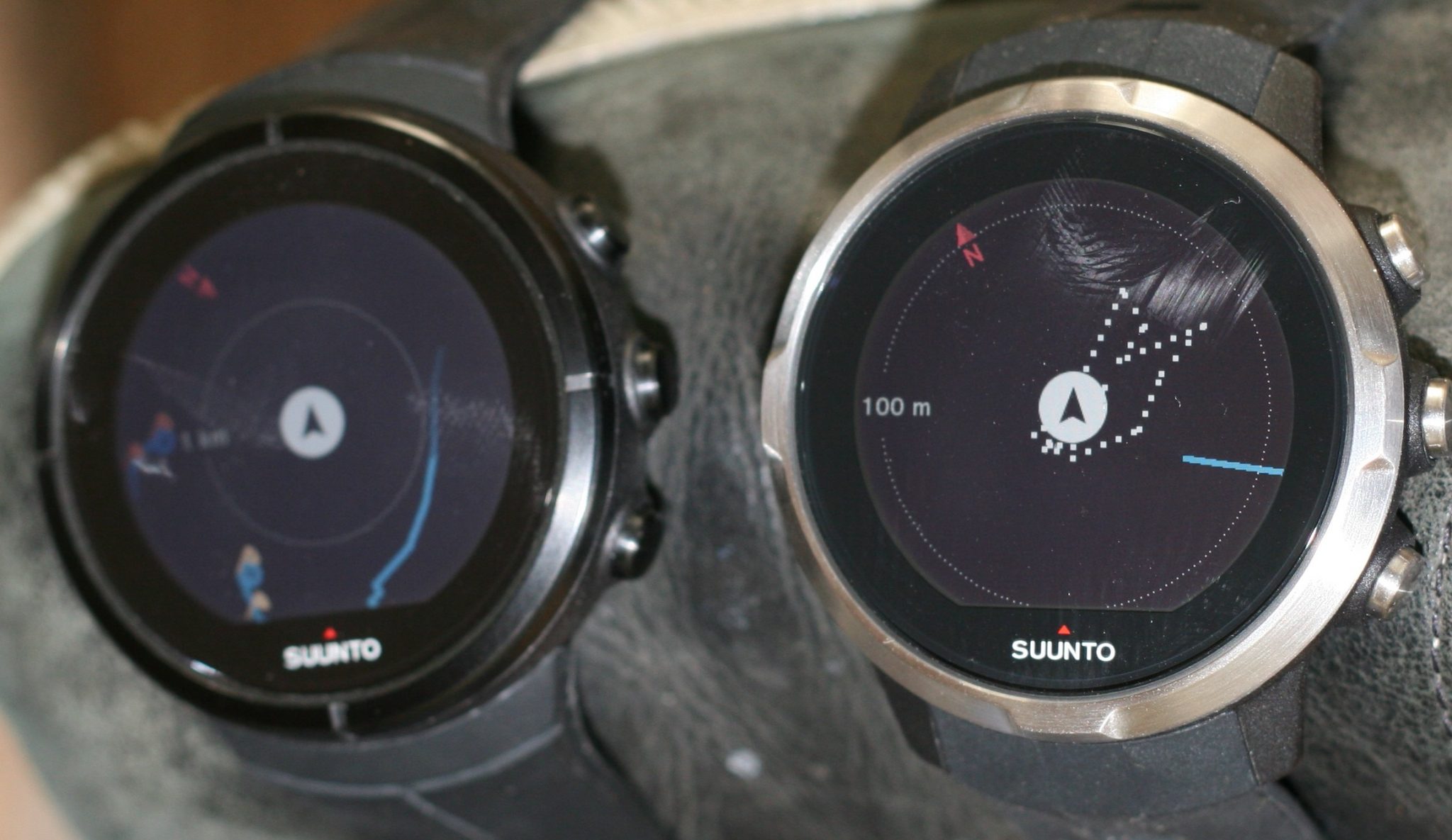 These options can be easily accessed before you start the sport OR you can press and hold the middle button during the exercise to do the same thing.
These options can be easily accessed before you start the sport OR you can press and hold the middle button during the exercise to do the same thing.
Scrolling through the data/navigation/lap pages is quick and smooth whilst exercising.
Garmin users might be interested that the LAP button inserts a separate tier of laps that overlap any AUTOLAP setting you may have made.
I prefer to have the BACKLIGHT always on. For me it makes the SPARTAN more readable. You can configure the watch so that the screen comes on when you turn your wrist to look at it. Initially I used this when running at night and, in March, it seemed pretty good in that respect.
 You can use the touchscreen to flick between screens or to navigate the in-exercise menus. The touchscreen DOES work pretty well, I found, but I prefer to use the buttons 95% of the time. That’s just me.
You can use the touchscreen to flick between screens or to navigate the in-exercise menus. The touchscreen DOES work pretty well, I found, but I prefer to use the buttons 95% of the time. That’s just me.
The flow around the screens is intuitive. You’ll also find an option or two hidden away through a screen swipe that isn’t so readily available with the buttons. So, for example, on the breadcrumb navigation screen you can swipe down for you location, POIs and routes.
The only annoying part of the in-sport experience, for me, is at the end. The SPARTAN seem SLOW to get through the post-exercise summary/lap/feel/save screens. OK you can turn off the ‘feel’ screen – aka smiley/sad face screen; and the lap screens are good; and the plots of HR/elevation over time are nice. But I’m not into any of that stuff I just want to save the file and move on. It’s also a bit slow at then physically saving the file. Very mildly annoying at worst – I can and do live with it.
The more notable issues for the various sports come to bear when considering how all the various sensors work…or not. I’ll cover the accuracy of sensors in the, err, accuracy sections. And I’ve covered sensors in general in the, err, sensor section above 🙂 Genius.
Before moving on to accuracy I just wanted to highlight these points
- You can create an on-the-fly interval workout
- The optical sensor works in the water (TA DA). Only Polar also do that, as of May 2017 Garmin do NOT do that.
- The ‘special’ triathlon mode deserves a mention
- You CAN insert manual laps in each leg, unlike with Garmin
- Pressing and holding the top button enters transition. I didn’t like this at first but, on reflection, it is a good way to progress to transition as it avoids an accidental press of a lap button a-la-Garmin.
- Pressing the top button again moves you on to the next sport
APPS – Suunto Spartan Sport Review
Nope. None of those
That chapter was easy to write 😉 It’s possible Suunto might introduce ‘app’ capability later.
GPS ACCURACY
I’ve used the SPARTAN SPORT WHR a lot since March 2017. It has been one of my watches of choice for a variety of reasons, including GPS accuracy.
Part of my usage covered a formal GPS test route and the SPARTAN SPORT WHR came out in the same ballpark as the non-WHR version. IE it’s up there with the very best. That was in GPS mode and NOT GPS+GLONASS mode. In fact it pretty much out-performed every other watch on its attempt at the course. It scored 81% and the best-ever result by any wrist-watch is 83%. I take the best result as the final one and haven’t seen any need to re-test it, unlike other watches. So I don’t formally test repeatability…I’m only me and I have a day job and limited time. Rest assured, though, the test is a hard one. (Details here).
Maybe the competitive offerings had a bad day and didn’t quite perform as excellently as they could (some of them are re-tested). I could debate myself for hours and maybe the SPARTAN SPORT WHR is not quite the best. Maybe its second or third of fourth best. Maybe. But it’s certainly not 10th or 11th best. It is up there near the top. In my experience. Although I would add caution that ACROSS ALL VENDORS I have encountered apparent differences in accuracy from one device to the next OF THE SAME MODEL.
The SPARTAN SPORT WHR scored VERY well on the easy sections of my GPS test route and normally-well on the medium difficulty sections. But it picked up marks over most others by also performing well on the hardest sections.
The raw FIT/TCX GPS test files of ALL devices are available (here) in a public folder along with an analysis spreadsheet of the summary results (there are three tabs in the spreadsheet).
Here’s an example from the test where there is a tricky section involving 2 passes underneath a solid stone bridge and a large circular route underneath tree cover near buildings. There’s also an out and back around a tree where I look for a track that follows the separate out and back tracks. The Suunto, in red, is one of the better tracks I’ve seen here.
Here is a GPS track for open water swimming compared to a Fenix 5X and a 920XT (from a different day). The 920XT is the better of the 3 and the SPARTAN WHR is the worst of the three. I’m not too bothered about GPS accuracy whilst swimming as there is an inherent and significant amount of inaccuracy coming from the submerging of the watch. The WHR undoubtedly overstates the distance but I’ve no idea what the precise distance was (920XT 2438m, Fenix 5X 2398m, WHR 2787m, actual distance might be c2400m )
Naturally I take my view of overall accuracy from other real-world usage as well, actually I use the test to support my baseline view and if my view differs to the test I look closer and run/bike some more. You could criticise my test in many ways but then you would eventually get to the point of needing a scientifically rigorous and repeatable test with standardised conditions and standardised movements of the arm and so on…and I bet even Garmin don’t do that. And that CLEARLY would then not be anywhere NEAR real-world usage. We would then probably have manufacturers producing devices to pass the test with flying colours but then failing in the real word…sigh!
HR Accuracy
 When used in conjunction with Suunto’s smart belt CHEST STRAP you get all the HRV, super accuracy and caching delights that you would expect from a top-notch HRM. It’s even a pretty small one – as sexy and streamlined as they come. The chest strap is still an annoying strap though! Hey! I like straps.
When used in conjunction with Suunto’s smart belt CHEST STRAP you get all the HRV, super accuracy and caching delights that you would expect from a top-notch HRM. It’s even a pretty small one – as sexy and streamlined as they come. The chest strap is still an annoying strap though! Hey! I like straps.
But you want to buy the SPORT WHR because of the optical HR ON THE WRIST. Let’s talk about that…
If the optical HR was 95% accurate every time with maybe only one spike or trough per session I’d probably be happy. Unfortunately there is not a single optical HR device FOR THE WRIST that I would use from ANY MANUFACTURER. Including the SPARTAN WHR. That’s just me though. I plan MY training around TRAINING LOAD derived from HR so it needs to be fairly accurate each time I exercise.
So you have to gauge, in general, if you are that interested in super-HR accuracy. If you ARE then please don’t buy ANY optical HR device. You’ll be disappointed at some point or other if you are unlucky or you may be one of the lucky ones who always get perfect results (ahem) or, more likely, who don’t notice the inaccuracies inherent in this generic technology across the market.
Now, I mentioned the phrase on the WRIST before. A company called VALENCELL make what has appeared to be historically the most accurate optical HR sensor. It goes on a band, normally worn on the upper arm in a device called the SCOSCHE RHYTHM+. Reviewed (here). It was SO accurate I spent quite a while figuring out if I had actually really been recording the chest strap on several watches rather than the Scosche on one of the watches. I hadn’t. It’s accurate.
There’s a LOT of movement going on in the wrist area. Much more than the upper arm. As well as movement there is maybe a bit less blood available to be sensed by the oHRM on the wrist. But we hoped that the awesome VALENCELL HRM unit inside the SUUNTO SPARTAN SPORT WHR would be THE BEST in the market. Maybe not quite up to the standards of the SCOSCHE RHYTHM (review) or the Polar OH1 (review), because of the wrist-worn position, but somewhere very close.
As we shall see. It isn’t. It’s on a par with the other wrist-based optical HRMs. Sometimes a bit better, sometimes not. A lot of people, including me, were disappointed as we had hoped that the VALENCELL+SUUNTO COMBO would give us the accuracy we wanted to enable us to trust ourselves to ditch our chest straps.
Now here’s the part where a sneaky reviewer convinces you it really is super accurate. They show you all their best charts and they also major on ones that are on a stationary bike trainer indoors. That is an EASY scenario for optical HR.
OK here are some accurate ones to start with 😉 but I know you are clever enough to see through me. The first is on a fairly bumpy trail on a MTB. As you can see the green HR line matches the red line nicely – MUCH better than the Fenix 5X. Perfect (well perfect enough for me to use). The lines overlain on the satellite image incidentally show the superior GPS (not GLONASS) performance of the SPARTAN.

Then this one is typical of some of the OK running efforts. this is a good example of something that, to me, is bordering on not quite accurate enough but which would be acceptable to most people.

Here’s another that’s kinda OK albeit a bit spikey at times
Then turning back to a bumpy bike ride we get the following chart which I would say is unacceptable for the SPARTAN WHR but the FENIX 5X is unacceptable too.
And then a nice pleasant road bike. All is well and good until a stop and then all manner of craziness breaks loose with both the WHR and the Fenix 5X.
So that’s a cross-section. There are some better charts and some worse charts. You get the picture.
I have to say that before this year I’ve had generally good oHR performance across the board but this year there seems to be ‘something in the air’. And, as you can see from the Fenix 5X and the SPARTAN WHR we can see that these top-end devices BOTH have issues. Maybe it’s cold weather or sunspots. I just don’t know.
To generalise across sports: A turbo trainer is best for oHR with the SPARTAN. But generally running performance is better than for cycling. Swimming performance was hit and miss too. Even on bumpy terrain the SPARTAN SPORT WHR CAN perform well with the oHR but then, inexplicably, it doesn’t perform well. Even on the exact same route another day. Believe me, I know how to WEAR them properly – it wasn’t that.
(Here) are some generic tips on improving your optical HR performance.
ELEVATION ACCURACY
Yeah. It’s good enough for me. Look at this over 2.5 hours. That’ll do despite it not being mount Everest.

Compare it to this elevation drift on the Fenix 5X over a longer time frame.

Resources/specifications:
- Screen Resolution: 320 x 300
- Size: 50mm x 50mm x 13.8mm
- Weight: 70g
- Altimeter, Digital compass, Optical Heart Rate
- Battery – 10 days standby or 8 hrs GPS
- Waterproofing: 100 m
- Activities: 80+
- Other: GPS, GLONASS, Touch screen
The Suunto Spartan Sport HR manual is available HERE
Alternate format for a review of the Suunto SPARTAN SPORT, non-WHR, (here)



Summary – Suunto Spartan Sport Review
It’s a great little watch. I like it.
It’s priced fairly compared to the more expensive Fenix 5/5X, although the Fenix 5’s have more features.
For features at a better price you’d go for the Fenix 3HR. But then, with the F3HR, you have just bought an old and fairly common model for quite a lot of money with quite a lot of features that you will NEVER use AND the Fenix 3 is NOT COMPATIBLE with all the new 2017 CIQ apps and beyond. Tread carefully.
The SPARTAN SPORT WHR is, in my opinion, a bit more stylish and a bit more suited as a 247 watch.
You compare the WHR to products priced more cheaply, like the Polar M600, but the comparison is more difficult as the M600 is really a super-connected running smartwatch. Sure I use the SPARTAN SPORT as a RUNNING WATCH too. Mostly I use it as an out-of-the-box running-with-power sports watch. It’s pretty much designed for that and will be improved further once I can also use STRYD as a footpod rather then the separate Polar footpod.
With cycling then you’ll be fine if you are not a competitive cyclist and just have the one bike you most often use. If you have the right Bluetooth power meter then you may well consider the SPARTAN SPORT WHR but if you have LOTS of bikes and sensors then the WHR will become annoying as you switch between bikes and sensors.
It’s nice enough for swimming and the odd triathlon.
I’m relatively keen at triathlons and I wouldn’t race competitively with a SPARTAN. By the same token I wouldn’t race with a FENIX either. But I REALLY WOULD & DO use the SPARTAN for general triathlon training and that’s where you spend the most amount of hours with your electronic best friend. Admittedly I’d wear a chest strap and so, in reality, I’m using the Suunto SPARTAN SPORT (non-WHR).
As of May 2017 the SPARTAN SPORT WHR still has some niggles. But they are relatively minor and MIGHT be obscure enough not to affect you. Some more work needs completing on 3rd party sensors, especially ones that transmit multiple data types (eg STRYD). But it’s pretty much there as a finished product. Now Suunto’s job is to go on expanding the feature set over the next few years and spreading out the firmware goodness to other models in the series.
My caveat with recommending it would be the optical HR. I’d say, just to be sure, buy it somewhere where you can easily return it within a month IF the optical HR just doesn’t work on you. You could be lucky…or unlucky in the optical HR regard. You’ll never know until you try it.
I could give it a 5 out of 5 or a 2 out of 5. It would just depend on the criteria I used. But I use it and I like it. I’m wearing one now.
Prices & Availability






















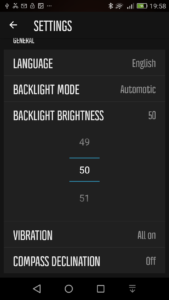


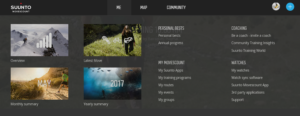
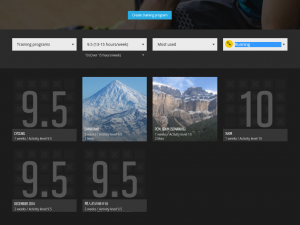


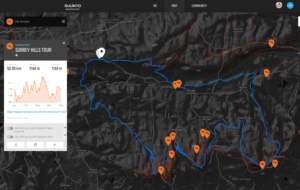
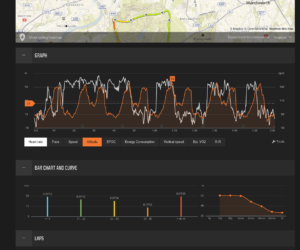
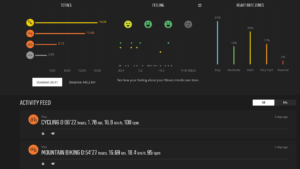









I tried using the SSWHR for a bit about a month ago. Three big issues for me:
The touch screen: Why! Why do this when not only does it move the screen or worse stop things by accident, but you’re left with a smudgy mess of a screen, when that’s the most important thing.
The button placement: I wear my watch on my left wrist. All the buttons are on the right side of the watch, If I bend my wrist during activity I inadvertently press the buttons and it happened….a lot.
The battery life: Is bollocks. I had that thing charged to full. After a day’s use with just one intensive workout (no gps, and used a chest strap) and normal movement…battery was at 68%. It went back that day.
You make great points here, but these were dealbreakers for me. I had high hopes for Suunto to swoop in and take a part of the market away from Garmin; and maybe it has, but that portion is nowhere near to the size it could have if they had built a package that took what Garmin has and improved upon it.
The nice fellows at Suunto still dont get that three buttons only work on the “inactive” side of the watch. If you put three where one has to start & stop & lap during an activity you are calling for trouble…. In the Ambit 3 you had three on the main side & then you had move across onto the other side to snap a lap… which you never managed…. Far from learning from it, now you have three one side, none on the other… and a touch screen.
A sport watch fit for purpose can only have TWO BUTTONS ON THE ACTIVE SIDE, a-la Garmin….
Lost cause….
They could had a easy fix by locking button presses when doing workouts (and the screen touch turned off) or do what Garmin did and force the user to long press a button to unlock the buttons for a bit (but turns on after a few seconds).
Though technically, those that wear the Fenix watch on their right arm are getting the 3 buttons in a bad place, even if they aren’t the stop/start buttons, it depresses into a bunch of random screens and things.
Lots of negativity around the 5X. I see this as a bit odd as I didn’t see much about the SSSWHR POOR battery life.
I start the 5X review with “OK let me start off by saying that these are the best, and nearly most expensive sports watches ever made. ” People have had battery issues with the 5X but I’ve not really noticed any issues with batter on either the WHR or 5X. I’m a “regular charger” person normally. I vaguely noticed with the SPARTANs that GLONASS seems to hit the battery but I have never quantified that. this is not my day job; I can only do so much.
Selectable watch face rather than customisable I’d say if you want nit-pick
It is possible to lock the watch during an activity as mentioned above
I consider myself well and truly nit-picked (ty it’s changed)
How do you set the screen to come on when you turn your wrist?
Having recently gone from an Apple Watch to a Spartan Sport WHR that’s the one thing I miss.
The only options I have for display/backlight are:
Backlight (auto or toggle)
Standby (on/off)
Brightness.
auto backlight? whatever the default was. maybe I just noticed it at night
It must be the standby option as that keeps the display on dim.
I had a good mooch through the instructions last night and searched around the net and that’s the only thing I can see that does that. But it doesn’t react to a wrist turn/raise.
Excellent write up by the way. Was one of the things I read which convinced me to buy the Spartan WHR.
thank you for your kind words
Hi Carl,
Since you have been using the watch for a month now, can you tell me what you like and what you don’ t like in terms of usage?
Also, how accurate is the wrist HR when doing indoor/outdoor running and any other exercise like HIIT, weight lifting or cardio.
Please advise.
Good afternoon.
I’m only comparing this to a S0 Apple Watch (I have the original
space black stainless steel one from first launch). So that’s what I’m gauging the accuracy off.
In terms of usage what do I like:
Screen is easily readable even in very bright sunshine (currently living and working in th Middle East) and you don’t need to press anything to see the screen in daylight. At night a quick press of a button and the screen comes on. I have it set to 50% brightness although at night I use the Do Not Disturb mode. So it requires a press of a button anyway but you get a digital display of the time. Again easily readable.
GPS is very accurate from what I’ve found. Either in the open desert (where you wouldn’t expect any issues) to the major city centre where I live. In my limited experience I haven’t had any issues due to tall buildings etc that some report. But as I live on the outskirts when I go for a run I’m only covering 1km before I get into some Wadi’s and open areas so this may be why.
HRM is broadly comparable to the one on the Apple Watch (which I found to be very accurate) certainly within +/- 5-10bpm. Which for what I’m doing is fine as I’m not training to be a world beating athlete. It seems to have gotten more accurate over time. This I think could be due to the strap becoming more supple so obtaining a better fit for workouts. I normally have it a notch or two tighter when working out and loosen it slightly for day to day use.
24hr HRM is good as unlike the Apple Watch where I could get about 20hrs out of it with a 60-90min workout. This I can get 4-5 days with running workouts of the same duration (HRM on, GPS on Good and screen set to go off during a run). I use the vibration to tell me when I’ve covered each mile and a quick button press to check average pace etc.
100m waterproofing is great.
Notifications is nice but if you get a long message it won’t display all of it. You have to read on the phone. So although welcome it would be nice if it allowed a full message to be displayed.
What don’t I like
Step count can be a bit optimistic. I find the Apple Watch works better for normal day to day step counting. Running etc then it’s accurate with the Apple Watch and my average pacing. Not sure why it’s so optimistic in the daytime. It can be as much a 500 steps ahead of the Apple Watch at any point (I wore both for 2 weeks to compare)
No integration with Apple health. This is a bugbear and it’s been flagged to Suunto for nearly 2yrs now yet they have done nothing about it. You have to use RunGap to sync from MOVESCOUNT and then export to Apple health. So a bit convoluted. This will only do workouts though and not daily steps or HR.
Bluetooth connection to my iPhone 7 Plus is a bit iffy. But not sure if that’s because I’m a beta tester and running iOS 11 or something between the phone and watch connection.
If there was a way to add pictures on here I would to show you. Some of the shots from use in workouts. But alas I can’t.
Overall I am very pleased with it and the Apple Watch S3 will have to be a game changer for me to switch back I think.
Carl. 🙂
some nice comments there Carl. thank you for contributing
i’d agree with what you say
Thanks for your great reviews, I keep getting back to this site for insights from someone who is not quoting spec sheets but has a keen interest in actually using the device.
I am in the market for a GPS watch and the Spartan Wrist is on the shortlist. However, besides running (mostly half marathon) I cycle long distance (300k and up) for which following a GPX route would be a great fallback solution in case the main navigation device should fail for whatever reason. Carrying a battery for recharging is not a problem, however, the Polar M430 and M600 seem to be simplifying long tracks to a max of 500 waypoints. Bummer.
Is the Suunto Spartan better in that regard? Any experience with transferring and watching long GPX routes on the Spartan?
Any advice or pointers to other GPS watches that may be appropriate for my admittedly unusual use case would be much appreciated.
Chris
hi chris. sounds like you need a bike nav…look at lezyne and wahoo elemnt and garmin edge 520/820 and mio cyclo 505hc + bryton. for infrequent nav you can carry them . maybe even a garmin hiking product eg foretrex? tho I don’t know much about them at all
I do sometime sdo 8/9 hour cycles with relatiovely complex navigation on paths and tracks. you simply can’t do that with a wrist watch and need a bike nav. you’ll probably need more than one battery pack and indeed more than one nav unit.once you start buying multiple bits of kit then fenix 5x as a single solution becomes more attractive.
is the Spartan any better…no. perhaps a bit more responsive.
the tomtom adventurer has a long life battery mode,
I may have overstated my cycling needs. For cycling I depend on navigation first and foremost, quick decisions are key and being able to glance at a map before complicated road junctions come up takes a lot of mental stress away. Not a biggie for a 6h ride but for three times that it makes a big difference. Recording heart rate and GPS are also nice but that is really it – navigation with a map and audible commands, HR and GPS and currently I am using a smartphone in a waterproof case for this purpose.
What I was looking for is a running watch (I am surprised that after years of casual running I am now developing an interest in getting better) that might serve a double purpose just in case something goes wrong in the bike department. A smartwatch like the M600 would probably serve me well for all my running but if the smartphone died the M600 would also stop navigating, wouldn’t it?
Hence my question about the Suunto and its ability to at least provide rudimentary navigation as in following a GPX track if necessary reversing directions, i.e. home.
Which watches can be recharged without interrupting the recording? I know the Suunto can, how about the Polars or TomTom Adventurer?
I am trying to cut down on the number of devices but the thought of a little redundancy without much weight penalty is compelling but maybe I am overthinking this.
Many thanks for your advice here and elsewhere on your site
Chris
often it’s the practicality of the charger that might limit the ability to charge and run at same time ie charger could be too big and/or stop ohr recording. I’d have to re-read the review to be sre of that specific info. I thin kthe polar can and the adventurer can’t. BUT the adventurer will last for AGES in hiking mode – like a day.
Any chance the Spartan Trainer can get the distance from a Stryd pod while using GPS at the same time?
Just realized I’m in the wrong review. 🙂
Hi 5krunner,
I have a SSWHR and am overall happy with it, however, my watch band broke recently and I was wondering if you knew of any 3rd party watch bands I can use? Not too keen on paying $50 for the Suunto band? Is any generic quick release band suitable? If so, what width?
Thank you
they should be standard. IIRC 25mm.
BTU it is not just the width it is also the diameter/size of the metal pin (which is never specified)
Did you maybe use the watch with the latest firmware released in November ? Lately there have been great deals for Spartan Sport WHR on Amazon, just above 200 €. Which one would you recommend Trainer or Sport if price is nearly same ? What do you think how long will Suunto support Trainer / Sport WHR in terms of removing bugs and adding features before skipping to new models ? Thank you for you comments.
i think both will be superceded this year.
I would hope that both are supported for several more years.
my preference would be the sport HR (not whr, with chest strap)
Thanx for your thoughts